Dominant-party system
A dominant-party system, or one-party dominant system is a political system in which opposition groups or parties are permitted, but a single party dominates election results.[1] Any ruling party staying in power for more than one consecutive term may be considered a dominant (also referred to as predominant or hegemonic) party.[2]
| Part of the Politics series | ||||||
| Party politics | ||||||
|---|---|---|---|---|---|---|
| Political spectrum | ||||||
|
||||||
| Party platform | ||||||
| Party organization | ||||||
|
||||||
| Party system | ||||||
|
|
||||||
| Coalition | ||||||
|
|
||||||
| Lists | ||||||
| Politics portal | ||||||
Between 1950 and 2017, more than 130 countries were included in the list of dominant-party systems, i.e. almost every state in the World on national, sub-national and district levels, both democratic and authoritarian[3].
Contemporary examples include United Russia (UR) in Russia, the Justice and Development Party (AKP) in Turkey, the Serbian Progressive Party (SNS) in Serbia,[4][5] the United Socialist Party of Venezuela (PSUV) in Venezuela, the New Azerbaijan Party (YAP) in Azerbaijan, Nur Otan in Kazakhstan, the People's Democratic Party of Tajikistan (PDPT) in Tajikistan, the Uzbekistan Liberal Democratic Party in Uzbekistan, Fidesz in Hungary, the People's Action Party (PAP) in Singapore, the African National Congress (ANC) in South Africa,[6] the Liberal Democratic Party (LDP) in Japan,[6] the Cambodian People's Party (CPP) in Cambodia, the Awami League in Bangladesh, ZANU–PF in Zimbabwe, the Botswana Democratic Party (BDP) in Botswana, the MPLA in Angola, the Rwandan Patriotic Front (FPR) in Rwanda, the Human Rights Protection Party (HRPP) in Samoa and the National Council for the Defense of Democracy – Forces for the Defense of Democracy (CNDD–FDD) in Burundi.
Theory
Critics of the "dominant party" theory argue that it views the meaning of democracy as given, and that it assumes that only a particular conception of representative democracy (in which different parties alternate frequently in power) is valid.[6] Raymond Suttner, himself a former leader of the African National Congress (ANC), argues that "the dominant party 'system' is deeply flawed as a mode of analysis and lacks explanatory capacity. But it is also a very conservative approach to politics. Its fundamental political assumptions are restricted to one form of democracy, electoral politics and hostile to popular politics. This is manifest in the obsession with the quality of electoral opposition and its sidelining or ignoring of popular political activity organised in other ways. The assumption in this approach is that other forms of organisation and opposition are of limited importance or a separate matter from the consolidation of their version of democracy."[6]
One of the dangers of dominant parties is "the tendency of dominant parties to conflate party and state and to appoint party officials to senior positions irrespective of their having the required qualities."[6] However, in some countries this is common practice even when there is no dominant party.[6] In contrast to one-party systems, dominant-party systems can occur within a context of a democratic system. In a one-party system other parties are banned, but in dominant-party systems other political parties are tolerated, and (in democratic dominant-party systems) operate without overt legal impediment, but do not have a realistic chance of winning; the dominant party genuinely wins the votes of the vast majority of voters every time (or, in authoritarian systems, claims to). Under authoritarian dominant-party systems, which may be referred to as "electoralism" or "soft authoritarianism", opposition parties are legally allowed to operate, but are too weak or ineffective to seriously challenge power, perhaps through various forms of corruption, constitutional quirks that intentionally undermine the ability for an effective opposition to thrive, institutional and/or organizational conventions that support the status quo, occasional but not omnipresent political repression, or inherent cultural values averse to change.
In some states opposition parties are subject to varying degrees of official harassment and most often deal with restrictions on free speech (such as press laws), lawsuits against the opposition, and rules or electoral systems (such as gerrymandering of electoral districts) designed to put them at a disadvantage. In some cases outright electoral fraud keeps the opposition from power. On the other hand, some dominant-party systems occur, at least temporarily, in countries that are widely seen, both by their citizens and outside observers, to be textbook examples of democracy. An example of a genuine democratic dominant-party system would be the pre-Emergency India, which was almost universally viewed by all as being a democratic state, even though the only major national party at that time was the Indian National Congress. The reasons why a dominant-party system may form in such a country are often debated: supporters of the dominant party tend to argue that their party is simply doing a good job in government and the opposition continuously proposes unrealistic or unpopular changes, while supporters of the opposition tend to argue that the electoral system disfavors them (for example because it is based on the principle of first past the post), or that the dominant party receives a disproportionate amount of funding from various sources and is therefore able to mount more persuasive campaigns. In states with ethnic issues, one party may be seen as being the party for an ethnicity or race with the party for the majority ethnic, racial or religious group dominating, e.g., the African National Congress in South Africa (governing since 1994) has strong support amongst Black South Africans and the Ulster Unionist Party governed Northern Ireland from its creation in 1921 until 1972 with the support of the Protestant majority.
Sub-national entities are often dominated by one party due the area's demographic being on one end of the spectrum. For example, the current elected government of the District of Columbia has been governed by Democrats since its creation in the 1970s, Bavaria by the Christian Social Union since 1957, Madeira by the Social Democrats since 1976, and Alberta by Progressive Conservatives from 1971 to 2015. On the other hand, where the dominant party rules nationally on a genuinely democratic basis, the opposition may be strong in one or more subnational areas, possibly even constituting a dominant party locally; an example is South Africa, where although the African National Congress is dominant at the national level, the opposition Democratic Alliance is strong to dominant in the Province of Western Cape.
Current dominant-party systems
Africa
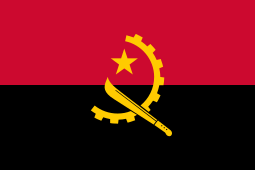
- Popular Movement for the Liberation of Angola, Movimento Popular de Libertação de Angola (MPLA)[7][8]
- In power since independence, 11 November 1975; sole legal party, 1975–91
- Formerly led by President José Eduardo dos Santos (in office from 10 September 1979 to 28 August 2017) and now led by João Lourenço.
- Presidential election, 1992: dos Santos (MPLA-PT) won 49.6% of the vote. As this was not an absolute majority, a runoff against Jonas Savimbi (40.1%) was required, but did not take place. Dos Santos remained in office without democratic legitimacy.
- New constitution, 2010: popular election of president abolished in favour of a rule that the top candidate of the most voted party in parliamentary elections becomes president.
- Parliamentary election, 2017: MPLA 61.11% and 150 of 220 seats.
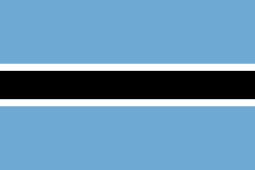
- Botswana Democratic Party (BDP)[9]
- Led by President Mokgweetsi Masisi, in office since 1 April 2018
- In power since independence in 1966,[10] first elected 3 March 1965
- Parliamentary election, 2019: BDP 52.65% and 38 of 57 seats
- Local elections, 2009: BDP 333 of 490 seats
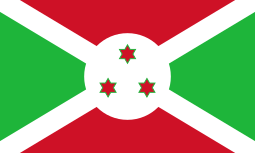
- National Council for the Defense of Democracy-Forces for the Defense of Democracy (CNDD-FDD)
- In power since 2005
- Led by President Pierre Nkurunziza, in office since 26 August 2005
- Presidential election, 2020: CNDD-FDD 71.45%
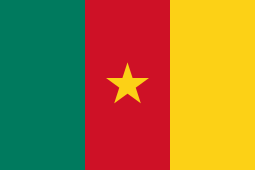
- Cameroon People's Democratic Movement (Rassemblement Démocratique et Populaire du Cameroun, RDPC)
- Led by President Paul Biya, in office since 6 November 1982
- In power, under various names, since independence, 1 January 1960 (Sole legal party, 1966–1990)
- Presidential election, 2018: Paul Biya (RDPC) 71.28%
- Parliamentary election, 2020: RDPC 139 of 180 seats
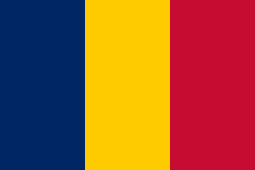
- Patriotic Salvation Movement (Mouvement Patriotique de Salut de SMPS)
- Led by President Idriss Déby Itno, in office since 2 December 1990
- In power since 2 December 1990
- Presidential election, 2016: Idriss Déby (MPS) 59.92%
- Parliamentary election, 2011: MPS 110 of 155 seats
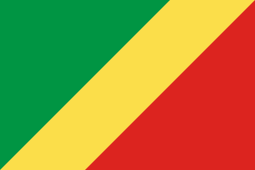
- Congolese Party of Labour (Parti Congolais du Travail, PCT)
- Led by President Denis Sassou-Nguesso, in office from 8 February 1979 to 31 August 1992 and since 15 October 1997
- In power, under various names, from 1963 to 1992 and since 1997 (Sole legal party, 1963–1990)
- Parliamentary election, 2017: PCT 90 of 139 seats
- Presidential election, 2016: Denis Sassou-Nguesso (PCT) 60.19%
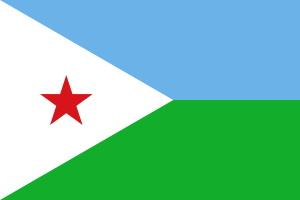
- People's Rally for Progress (Rassemblement Populaire pour de Progrès, RPP)
- Led by President Ismail Omar Guelleh, in office since 8 May 1999
- In power since its formation in 1979 (Sole legal party, 1979–1992)
- Parliamentary election, 2018: RPP in coalition, 87.83% and 57 of 65 seats
- Presidential election, 2016: Ismail Omar Guelleh (RPP) 87.07%
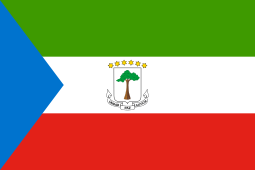
- Democratic Party of Equatorial Guinea (Partido Democrático de Guinea Ecuatorial, PDGE)
- Led by President Teodoro Obiang Nguema Mbasogo, in office since 3 August 1979
- In power since its formation in 1987 (Sole legal party, 1987–1991)
- Senate election, 2017: PDGE 92.00% 55 of 70 seats (Includes 15 unelected representatives appointed by the president.)
- Chamber of People's Representatives election, 2017: PDGE 92.00% 99 of 100 seats
- Presidential election, 2016: Teodoro Obiang Nguema Mbasogo (PDGE) 93.53%
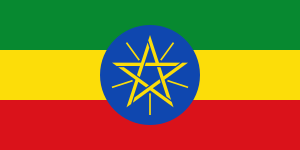
- Prosperity Party, previously Ethiopian People's Revolutionary Democratic Front (EPRDF)
- Led by Prime Minister Abiy Ahmed, in office since 2 April 2018
- In power since 28 May 1991 (party reorganization 2019)
- Parliamentary election, 2015: 500 of 547 seats (546 of 547 seats including allies)
- Regional election, 2015: Regional partners 1987 of 1990 seats
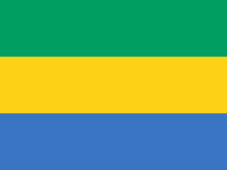
- Gabonese Democratic Party (Parti Démocratique Gabonais, PDG)
- Led by President Ali Bongo Ondimba, in office since 16 October 2009
- In power, under various names, since 28 November 1958 (Sole legal party, 1968–1991)
- Parliamentary election, 2018: PDG 98 of 120 seats
- Presidential election, 2016: Ali Bongo Ondimba 49.8%
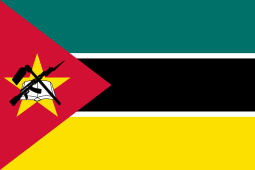
- Mozambican Liberation Front (FRELIMO)
- Led by President Filipe Nyusi, in office since 15 January 2015
- In power since independence, 25 June 1975 (Sole legal party, 1975–1990)
- Presidential election, 2019: Filipe Nyusi (FRELIMO) 73.46%
- Parliamentary election, 2019: FRELIMO 71.28% and 184 of 250 seats
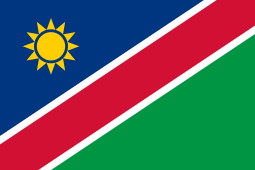
- South West Africa People's Organisation (SWAPO)
- Led by President Hage Geingob, in office since 21 March 2015
- In power since independence, 21 March 1990
- Presidential election, 2019: Hage Geingob (SWAPO) 56.3%
- Parliamentary election, 2019: SWAPO 63 of 96 seats
- Local elections, 2015: SWAPO 112 of 121 seats
- Regional elections, 2015: SWAPO 277 of 378 seats
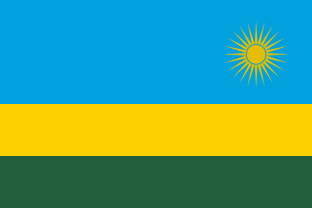
- Rwandan Patriotic Front (RPF)
- Led by President Paul Kagame, in office since 24 March 2000
- In power since 19 July 1994
- Presidential election, 2017: Paul Kagame (RPF) 98.79%
- Parliamentary election, 2018: RPF 73.95% and 40 of 80 seats
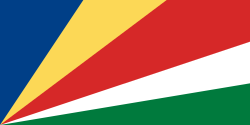
- United Seychelles Party (US), previously the People's Party (PL)
- Led by President Danny Faure, in office since 16 October 2016
- In Power since 1977
- Presidential election, 2015: James Michel (PL) 50.15%
- Parliamentary elction, 2016: Lost parliamentary majority for the first time.

- African National Congress (ANC)
- Led by President Cyril Ramaphosa, in office since 15 February 2018
- In power since 10 May 1994
- Parliamentary election, 2019: ANC 57.50% and 230 of 400 seats
- Municipal elections, 2016: ANC 53.91%
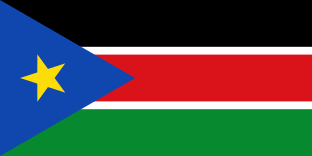
- Sudan People's Liberation Movement (SPLM)
- Led by President Salva Kiir Mayardit, in office since 9 July 2011; and was President of Southern Sudan since 30 July 2005
- In power since independence, 9 July 2011; and in the autonomous Government of Southern Sudan since formation, July 9, 2005
- Presidential election, 2010: Salva Kiir Mayardit (SPLM) 92.99%
- Parliamentary election, 2010: SPLM 160 of 170 seats
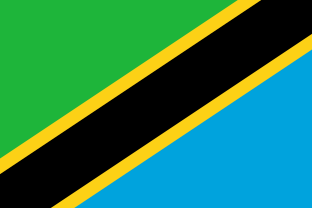
- Chama Cha Mapinduzi (CCM)
- Led by President John Magufuli, in office since 5 November 2015
- In power, under various names, since independence, 9 December 1961 (Sole legal party, 1964–1992)
- Civic election, 2014: CCM 74.50%
- Presidential election, 2015: John Magufuli (CCM) 58.46%
- Parliamentary election, 2015: CCM 252 of 367 seats
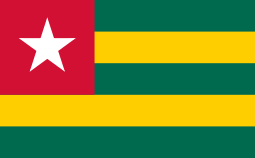
- Union for the Republic (UNIR)
- Led by President Faure Gnassingbé, in office since 5 February 2005
- In power since its formation in 2012
- Presidential election, 2020: Faure Gnassingbé (UNIR) 70.78%
- Parliamentary election, 2018: UNIR 59 of 91 seats
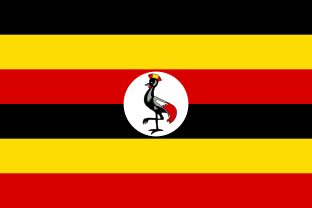
- National Resistance Movement (NRM)
- Led by President Yoweri Museveni, in office since 29 January 1986.
- In power as de facto dominant party since 29 January 1986 as a "non-party Movement."
- Became de jure dominant party with the return of multi-party elections on 28 July 2005.
- Presidential election, 2016: Yoweri Museveni (NRM) 60.62%
- Parliamentary election, 2016: NRM 293 of 426 seats
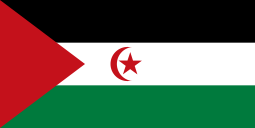
- The Polisario Front is the only political party represented in the government in exile of the Sahrawi Arab Democratic Republic (headquartered in neighbouring Algeria)
- Legislative election, 2012: 53 of 53 Seats
- Other parties are permitted in the Sahrawi constitution, but currently none exist
- The United Nations has designated the Polisario Front to be the sole legitimate representative of the Sahrawi people[12]
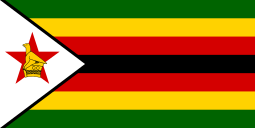
- Zimbabwe African National Union – Patriotic Front (ZANU-PF)
- Formerly led by President Robert Mugabe, in office from 18 April 1980 to 21 November 2017 (as president since 31 December 1987) and now led by Emmerson Mnangagwa since 24 November 2017.
- In power since independence, 17 April 1980
- Presidential election, 2018: Emmerson Mnangagwa (ZANU-PF) 50.8%
- House of Assembly election, 2018: ZANU-PF 179 of 270 elective seats
- Senate election, 2018: ZANU-PF 43.8% and won 34 of 80 elective seats
Americas
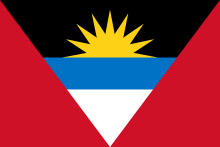
- The Barbuda People's Movement has ruled the island of Barbuda since 1979, and has won every election for the island's seat in the national House of Representatives.

- The Justicialist Party has won every gubernatorial election since 1973 in the provinces of Formosa, La Pampa, San Luis, Santa Cruz and La Rioja.
- The Neuquén People's Movement has won every gubernatorial election since 1962 in the province of Neuquén

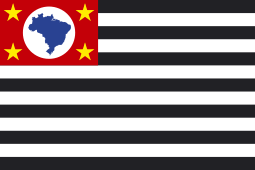

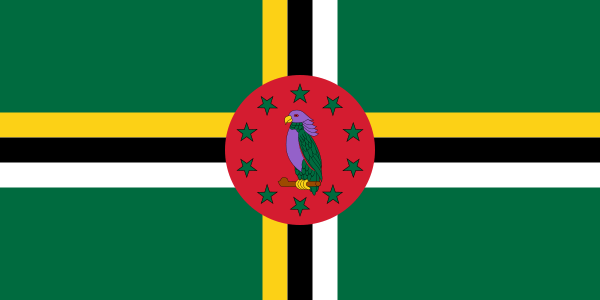
- Dominica Labour Party
- Led by Roosevelt Skerrit and Charles Savarin
- In power since 2000
- 2019 Dominican general election: 58.95% and won 18 of 21 seats

- The Institutional Revolutionary Party (PRI) has won every gubernational election in the states of Coahuila, Colima, Campeche, Hidalgo and the State of Mexico since its foundation in 1929.
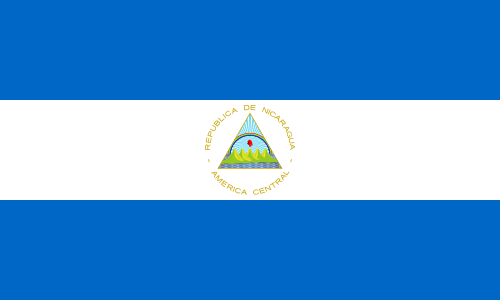
- FSLN
- Presidency since 2007 (and 1979–1990) mayor of every major city, including Managua, majorities in most departments.
- Local elections, 2012: 75,7% and 127 of 153 seats
- General election, 2016: Daniel Ortega 72.5%
- National election, 2016: 66.8%
- Constituency election, 2016: 65.7%
- Central American Parliament, 2016: 68.6%
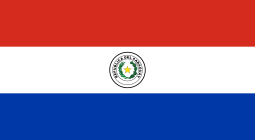
- ANR-Colorado party
- Led by Mario Abdo Benítez
- In power since 1886–1904, 1912, 1948–2008, 2013–present
- 2018 Paraguayan general election: 48.96%, Mario Abdo Benítez

- United Socialist Party of Venezuela led Great Patriotic Pole
- In power since 1999, led by Hugo Chavez, then Nicolás Maduro
- 2017 Venezuelan Constituent Assembly election: won 538 of 545 seats
- 2017 Venezuelan regional elections: 52.7%
- 2017 Venezuelan municipal elections: GPP 71.31% and won 306 of 365 seats
- 2018 Venezuelan presidential election: Nicolás Maduro 67.8%
Canada
Canada's House of Commons, the lower house of the Parliament of Canada, operates under a multi-party system, although every federal election since 1867 has seen in essence only two federal parties win enough seats to form a government: the Liberal Party, and various iterations of a conservative party including the now defunct Progressive Conservative Party of Canada and the Conservative Party, which governed from 2006 to 2015. While federally, the Liberals and Conservatives generally dominate federal politics, provincial political parties are not directly affiliated with their federal counterparts, and several have formed majority and minority governments on a provincial level.
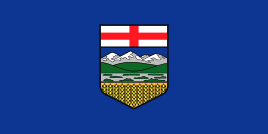
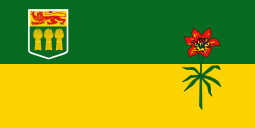

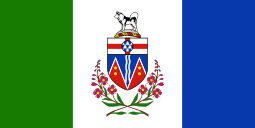
United States
As a whole, the nation has a two-party system, with the main parties since the mid-19th century being Democratic Party and the Republican Party. However, some states and cities have been dominated by one of these parties for up to several decades. Generally, the Democratic Party dominate in the urban metropolitan areas, while the Republican Party dominate in the rural areas. Following the 2018 elections, the Republican Party continued to hold a majority of State Legislatures and a majority of Governorships. However the Democratic Party won a majority of seats in the House of Representatives, while the Republican Party increased their majority in the Senate, resulting in a split Congress. As a consequence of Donald Trump's victory in the 2016 elections, the Republican Party also controls the Presidency.
Dominated by the Democratic Party:
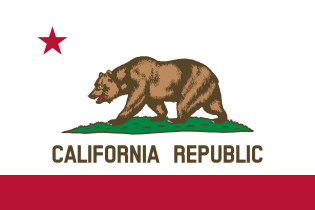
- United States presidential election, 2016: Hillary Clinton (Democratic) 61.73% and won 55 electoral votes
- United States Senate election, 2016: Democrats 61.6%
- State Assembly election, 2016: Democrats 61.08% and won 55 of 80 seats
- United States House of Representatives elections Democrats 63.91% and won 39 of 53 seats
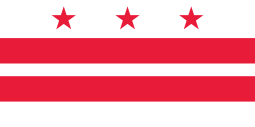
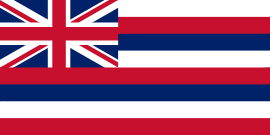
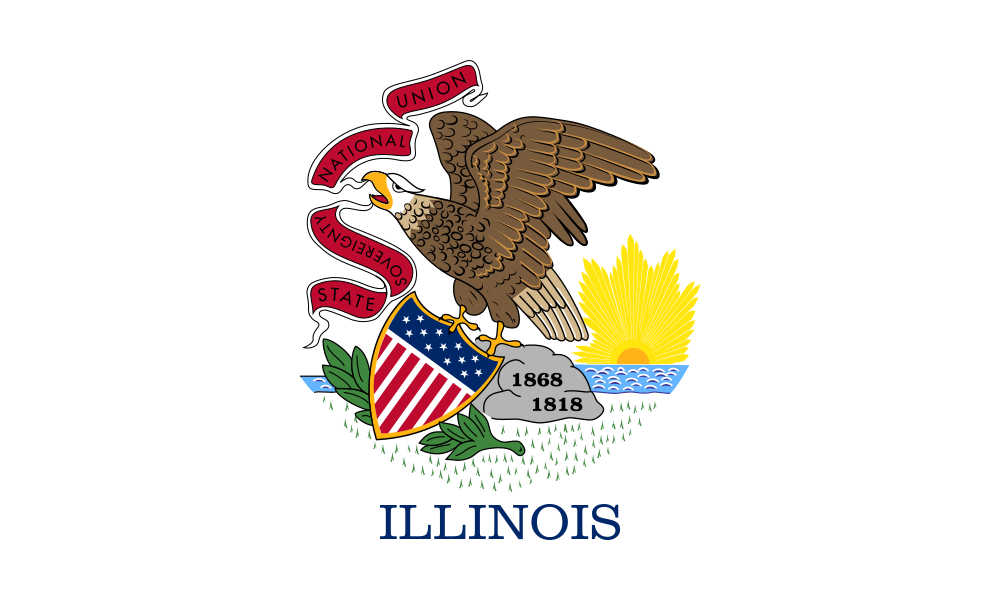
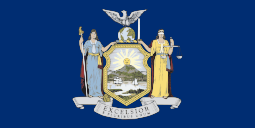
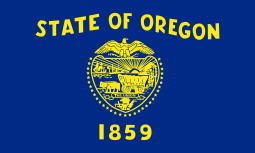

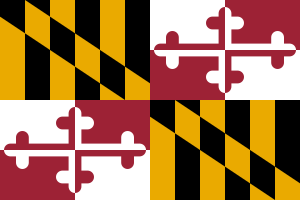
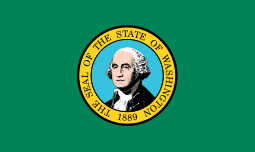
Dominated by the Republican Party:
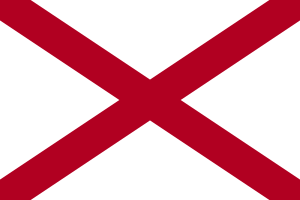
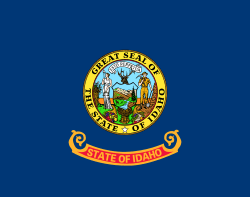
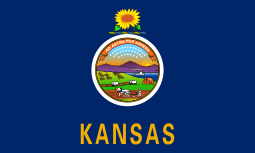
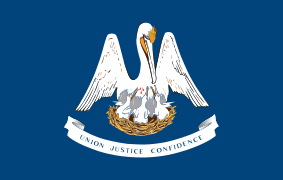

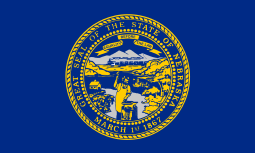
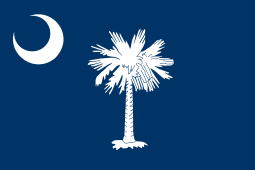
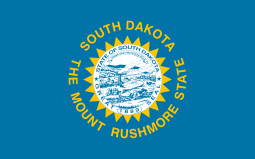
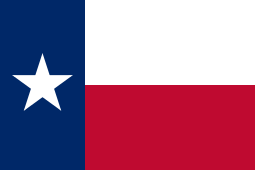

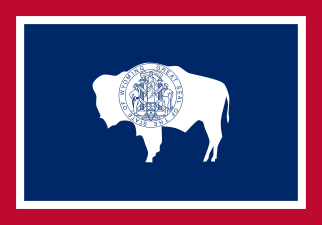
Dominant-party systems can also exist on native reservations with republican forms of government. The Seneca Nation of Indians, a tribe with territory within the bounds of New York State, has had the Seneca Party as the dominant party in its political system for several decades.
Asia and Oceania

- Awami League (AL)
- Led by Prime Minister Hasina Wazed, in office since 6 January 2009
- In power since 2008
- 2018 Bangladeshi general election: 81.93% and 259 of 300 seats

- Cambodian People's Party (CPP)
- Led by Prime Minister Hun Sen, in office since 14 January 1985
- In power since 1993 (sole legal party 1979–1992)
- 2017 Cambodian communal elections: 50.76% and 6,503 of 11,572 councillors
- 2018 Cambodian Senate election: 95.95% and 58 of 58 seats
- 2018 Cambodian general election: 76.85% and 125 of 125 seats

- Bharatiya Janata Party (BJP)
- Led by Prime Minister Narendra Modi, in office since 26 May 2014
- Gujarat: Since 1995, the Bharatiya Janata Party has consecutively ruled the state legislature of Gujarat.
- Odisha: Since 2000, the Biju Janata Dal has consecutively ruled the state legislature of Odisha.

- Liberal Democratic Party (LDP)
- Led by Prime Minister Shinzō Abe, in office since 26 December 2012
- In power 1955–1993, 1994–2009 and since 2012 (governed in coalition with Komeito since 1999 in order to maintain Supermajority)
- Parliamentary election 2017: LDP 284 of 465 seats (Governing coalition 313 of 465 seats).

- West Bank Government
- Fatah
- Led by President Mahmoud Abbas, in office since 15 January 2005 (as Chairman of the PLO since 26 October 2004)
- In power since 1994
- 2005 Palestinian presidential election: Mahmoud Abbas 62.52%
- Gaza Strip Government
- Hamas
- Led by Chairman of the Political Bureau Ismail Haniyeh, in office since 6 May 2017 (as Prime Minister from 29 March 2006 to 2 June 2014)
- In power since 2007
- 2006 Palestinian legislative election: 74 of 132 seats and 44.45%
- West Bank Government

- Human Rights Protection Party (HRPP)
- Led by Prime Minister Tuila'epa Sailele Malielegaoi, in office since 23 November 1998
- In power since 1982
- General election, 2016: HRPP 56.92% 35 of 50 seats

- People's Action Party (PAP)
- Led by Prime Minister Lee Hsien Loong, in office since 12 August 2004
- In power since 5 June 1959[16]
- Parliamentary election, 2020: PAP won 61.2% of the popular vote and 83 out of 93 seats
- Presidential election, 2017: Former PAP member Halimah Yacob won (only candidate)[lower-alpha 1]

- The Democratic Party of Korea
- Led by President Moon Jae-in, in power since 10 May 2017
- control National Assembly of the Republic of Korea with absolute majority since April 2020, 180 out of 300 seats
- control 14 out of 17 cities and province, has dominated in Seoul, Gwangju and Jeolla Province

- National Progressive Front (NPF), a coalition of 10 parties led by the Arab Socialist Ba'ath Party – Syria Region (Baath Party)
- Led by President Bashar al-Assad, in office since 17 July 2000
- In power since 8 March 1963
- Presidential election, 2014: Bashar al-Assad 88.7%
- Parliamentary election, 2016: Baath Party won 134 of 250 seats (National Progressive Front 200 of 250)

- The Democratic Progressive Party
- Led by President Tsai Ing-wen, in office since 20 May 2016
- control the Legislative Yuan since 1 February 2016, dominate Southern Taiwan (include Tainan and Kaohsiung)
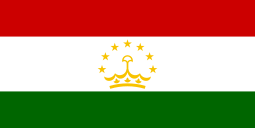
- People's Democratic Party of Tajikistan is headed by President Emomalii Rahmon
- In power since 1994
- Presidential election in 2013 won by Emomali Rahmon 83.92%.
- Since the Parliamentary election in 2020 holds 47 seats in Assembly of Representatives.
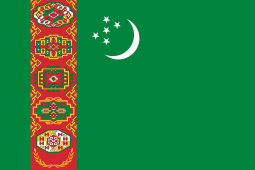
- Democratic Party of Turkmenistan is headed by Kasymguly Babaev since 18 August 2013.
- Presidential election in 2017 won by Gurbanguly Berdimuhammedow 97.69%.
- Parliamentary election, 2018: 55 of 125 seats in the Assembly of Turkmenistan.
- In power since the Independence 1990
- Until 2012 it was the sole legal party in Turkmenistan.
Eurasia

- New Azerbaijan Party (YAP) has been in power essentially continuously since 1993.
- Parliamentary election, 2020: 72 of 125 seats
- Presidential election, 2018: Ilham Aliyev 86.02%

- Nur Otan is headed by former President Nursultan Nazarbayev since 4 July 2007.
- Since last parliamentary election in 2016: 82.20% and holds 84 of 107 seats in the Majilis.
- Presidential election in 2019 won by Kassym-Jomart Tokayev 70,96%.

- Justice and Development Party
- Led by Recep Tayyip Erdoğan (President 2014–present, Prime Minister 2003-2014)
- In power since 2002
- Presidential election, 2018: Recep Tayyip Erdoğan 52.59%
- Parliamentary election, 2018: 42.56% and 295 of 650 seats
- Local elections, 2019: 42.55%
- Justice and Development Party

- United Russia
- Led by Dmitry Medvedev (President 2008–2012, Prime Minister 2012-2020)
- In power since 2003
- Presidential election, 2018: Vladimir Putin 76.7% (endorsed by United Russia and several other parties, but run as independent)
- Parliamentary election, 2016: 54.20% and 343 of 450 seats
- Governors: 73 of 85
- Absolute majority (more than half of all seats) in 81 regional parliaments of 85
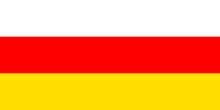
- United Ossetia
- Led by Anatoliy Bibilov
- In power since 2014 (a continuation of the governing 2001–2014 Unity Party, now defunct)
- Parliamentary election, 2014: 44.84% and 20 of 34 seats
- Presidential election, 2017: Anatoliy Bibilov 54.80%
Europe


- Austrian People's Party
- Led by Johanna Mikl-Leitner, Governess (since 2017)
- In power since 1945[lower-alpha 2]
- State election, 2018: VPNÖ 49.64% and won 29 of 56 seats
- European Parliament election, 2019: ÖVP 40.1%
- 2019 Austrian legislative election: ÖVP 42.3%

- Austrian People's Party
- Led by Günther Platter, Governor (since 2008)
- In power since 1945
- 2018 Tyrolean state election: TVP 44.26%
- European Parliament election, 2019: ÖVP 42.6%
- 2019 Austrian legislative election: ÖVP 45.8%
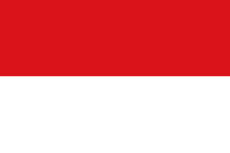
- Social Democratic Party of Austria
- Led by Michael Häupl, Mayor (since 1994)
- In power since 1945
- State election, 2015: SPÖ 39.59%
- 2019 Austrian legislative election: SPÖ 27.1%
- European Parliament election, 2019: SPÖ 30.3%

- Austrian People's Party
- Led by Markus Wallner, Governor (since 2011)
- In power since 1945
- European Parliament election, 2019: ÖVP 34.6%
- 2019 Austrian legislative election: ÖVP 36.6%
- State election, 2019: VVP 43.53%

- Austrian People's Party
- Led by Thomas Stelzer, Governor (since 2017)
- In power since 1945
- State election, 2015: OÖVP 36.37%
- 2019 Austrian legislative election: ÖVP 36.8%
- European Parliament election, 2019: ÖVP 35.1%


- Socialist Party (PS)
- In power since 2001

- Christian Democratic Union (CDU)
- In power since 2005
- Led by Angela Merkel, Chancellor (since 2005)
- Federal Election, 2017: CDU 32.9%
.svg.png)
- Christian Social Union in Bavaria (CSU)
- Led by Markus Söder, Minister-President (since 2018)
- In power since 1946, with a sole hiatus from 1954 to 1958. From 1966 to 2003 and 2013 to 2018, CSU ruled with an absolute majority. Its share of votes peaked in 1974 at 62%. From 2003 to 2008, CSU held a two-thirds supermajority in the Bavarian Landtag. Since the 2010s, the CSU's dominance has somewhat eroded (38.8% in the 2017 German federal election; 37.2% in the 2018 Bavarian state election), but it is still considered impossible to form a government led by another party in Bavaria.
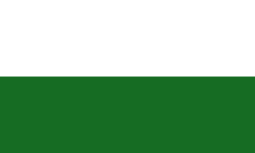
- Christian Democratic Union (CDU)[20]
- In power since the establishment of the state in 1990. CDU ruled with an absolute majority until 2004, and even a two-thirds supermajority in the Landtag from 1994 to 2004. Its popularity peaked at 56,9% in the 1999 election. In the 2010s, CDU's dominance eroded significantly. In the 2017 German federal election, Saxony's CDU came in second place for the first time in the history of the state, reaching 26.9%, behind the far-right Alternative für Deutschland. Due to the irreconcilability of left-wing and right-wing opposition parties, it is still considered impossible to form a state government led by another party than CDU.

- Fidesz–KDNP
- In power since 2010 (won in the European Parliament election, 2009: 14 of 22 of seats for Hungary)
- Led by Viktor Orbán, Prime Minister (since 2010)
- 2018 Hungarian parliamentary election: 49.27% and qualified majority, 133 of 199 seats
- European Parliament election, 2019: 52.56% and 13 of 21 of seats for Hungary
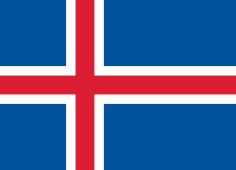
- Independence Party has governed Iceland since 1946, except for 1956–1959, 1971–1983 and 2009–2013 and is the biggest party since 1942, except for 2009–2013.
- Parliamentary election, 2017: 25.2% and won 16 of 63 seats

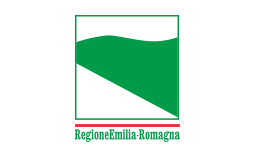
- Democratic Party[lower-alpha 3]
- In power since 2007
- Regional election, 2014: PD 44.5% and 31 of 50 seats
- European Parliament election, 2014: PD 52.5%
- Came in second place in Emilia-Romagna to the Five Star Movement in the Chamber of Deputies election, 2018: PD 26.4%
- Came in second place in Emilia-Romagna to the Five Star Movement in the Senate election, 2018: PD 26.3%
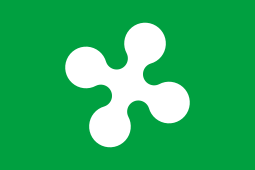
- Centre-right coalition
- In power since 1994
- Came in second place in Lombardy to the Democratic Party in the European Parliament election, 2014: FI+LN+FdI 34.3%
- Regional election, 2018: CDX 51.23% and won 49 of 80 seats
- Presidential election, 2018: Attilio Fontana 49.7%
- Chamber of Deputies election, 2018: CDX 46.9%
- Senate election, 2018: CDX 47.2%
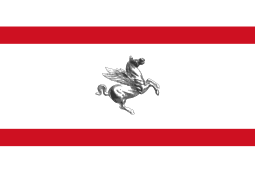
- Democratic Party[lower-alpha 3]
- In power since 2007
- Regional election, 2015: PD 48.1% and 25 of 41 seats
- European Parliament election, 2014: PD 52.5%
- Chamber of Deputies election, 2018: PD 29.6%
- Senate election, 2018: PD 30.5%
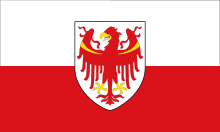
- South Tyrolean People's Party
- In power since 1948 (The German Association dominated from 1921 and before that it was part of Tyrol)
- 1924 Italian general election: German Association, part of Lists of Slavs and Germans 80%
- Provincial elections, 2013: SVP 45.7% and 17 of 35 seats
- European Parliament election, 2014: SVP 48.0%
- Chamber of Deputies election, 2018: SVP 48.8%
- Senate election, 2018: SVP 49.8%
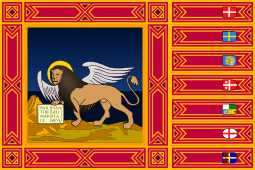
- Centre-right coalition
- In power since 1994
- Came in second place in Veneto to the Democratic Party in the European Parliament election, 2014: FI+LN+FdI 33.2%
- Regional election, 2015: CDX 52.2% and won 29 of 51 seats
- Presidential election, 2015: Luca Zaia 50.1%
- Chamber of Deputies election, 2018: CDX 48.1%
- Senate election, 2018: CDX 48.2%
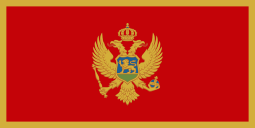
- Democratic Party of Socialists of Montenegro, founded in 1943 as Communist Party of Montenegro, part of the Communist Party of Yugoslavia
- Led by Milo Đukanović, seven term former Prime Minister (1991–1993, 1993–1996, 1996–1998, 2003–2006, 2008–2009, 2009–2010, 2012–2016) and President (1998–2002, 2018-)
- In power since establishment of Communist rule in Montenegro/Yugoslavia in 1944-45 (Sole legal party, 1945–1990)
- Parliamentary election, 2016: DPS 41.1% and 35 of 81 seats
- Presidential election, 2018: Milo Đukanović (DPS), 53.90%


- Local elections, 2013: SDP 34.81%
- European Parliament election, 2014 (in Madeira): SDP 31.0%
- Regional election, 2015: SDP 48.56% and 25 of 47 seats
- 2015 Portuguese legislative election (in Madeira): SDP 37.8% and 3 of 6 seats
including the then leader, Luís Marques Mendes, say NO) No: 65.40%
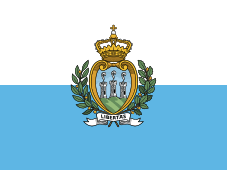
- The Sammarinese Christian Democratic Party (PDCS) have always had a plurality of seats in the Grand and General Council since 1951, However it has not consistently formed the government. from 2016 to 2020 it was in opposition. The predecessor of the PDCS the Sammarinese People's Party was already biggest party in 1920.
- General Election, 2019. PDCS 33.35%

- Serbian Progressive Party
- In power since 2012
- Led by Aleksandar Vučić, two-term Prime Minister (2014-2017) and President (2017-onwards)
- Parliamentary election, 2016: SNS 48.25% and 93 of 250 seats
- 2016 Vojvodina parliamentary election: SNS 44.48% and 63 of 120
- Presidential election, 2017: Aleksandar Vučić, 55.06%


- Spanish Socialist Workers' Party of Andalusia
- Majority in Andalusia from 1977 to 2011
- European Parliament election, 2014: PSOE 35.13%
- Came in second place in Andalusia to the People's Party in the General election, 2016 with 31.20% and won 20 of 61 seats
- Regional election, 2018: PSOE–A 27.95% and on 33 of 109 seats

.svg.png)
- Welsh Labour Party
- In power in the devolved Welsh Assembly since 1999
- Led by Mark Drakeford, First Minister (since 2018)
- 2019 UK Parliamentary election: Welsh Labour 40.9% and 22 of 40 seats
- 2016 National Assembly for Wales election: Welsh Labour 34.7% and 29 of 60 seats
- 2017 Local elections: Welsh Labour 35.2% and 472 of 1271 seats
- 2019 European Parliament election: Welsh Labour 15.29% and 1 of 4 seats

- Scottish National Party
- In devolved government since 2007 (2007–2011 minority, 2011–2016 majority, 2016–present minority)
- Led by Nicola Sturgeon, First Minister (since 2014)
- 2019 UK Parliamentary election: SNP 45% and 48 of 59 seats
- 2016 Scottish Parliament election: SNP 46.5% and 63 of 129
- 2019 European Parliament election: SNP 37.8% and 3 of 6 seats
Formerly dominant parties
North America
.svg.png)
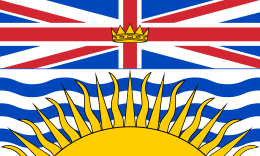

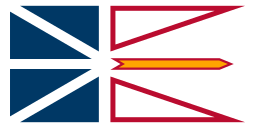

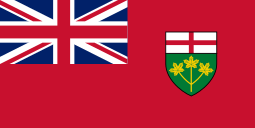



- During the "Era of Good Feelings," the Democratic-Republican Party dominated national politics with no effective opposition from the Federalist Party or any third parties, allowing James Monroe to run unopposed in the 1820 presidential election. This dominance continued until the rise of the American Whig Party circa 1830.
- From 1933 to 1995, the Democratic Party held a majority in both Houses of Congress except 1947 to 1949, 1953 to 1955 which Republicans controlled both Houses of Congress and 1981 to 1987 which Republicans controlled the Senate.
- New England:
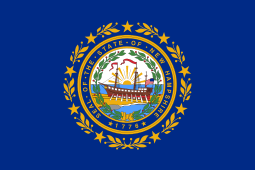
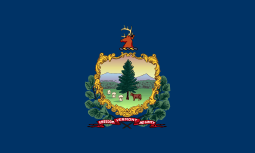
- Southern United States:
- The South (usually defined as coextensive with the former Confederacy) was known until the era of the civil rights movement as the "Solid South" due to its states' reliable support the Democratic Party, which at that time had a strong conservative wing. Several states had an unbroken succession of Democratic governors for half a century to over a century.

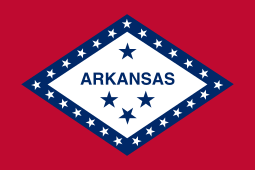
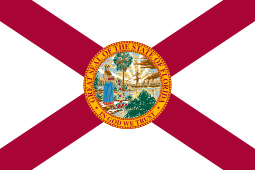
.svg.png)


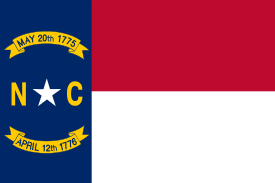
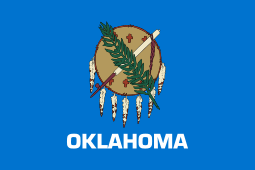

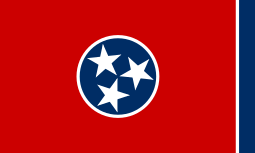

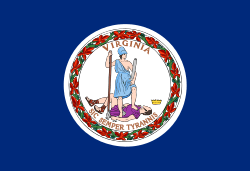
- During and after that movement, however, factors such as the national Democratic Party's support for the civil rights movement and the national Republican Party's "Southern strategy" since the mid-1960s and support for the application of religious values to politics eroded the South's support for the Democrats.
- The South (usually defined as coextensive with the former Confederacy) was known until the era of the civil rights movement as the "Solid South" due to its states' reliable support the Democratic Party, which at that time had a strong conservative wing. Several states had an unbroken succession of Democratic governors for half a century to over a century.
Caribbean and Central America
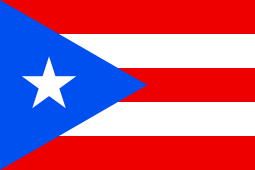
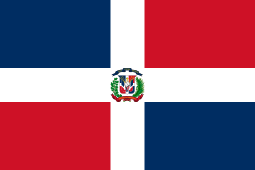

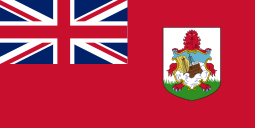
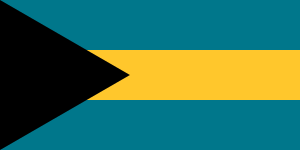
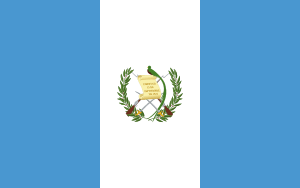

South America


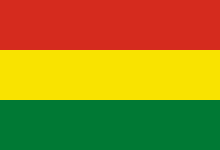


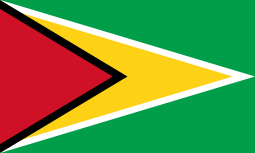

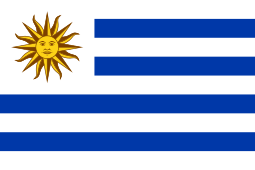
Europe









.svg.png)
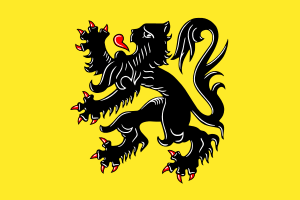

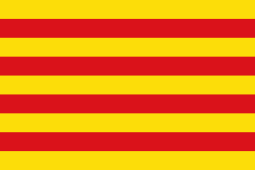



.svg.png)
.svg.png)

.svg.png)

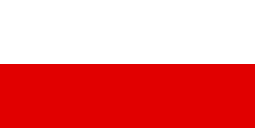

.svg.png)
.svg.png)
.svg.png)


- Emilia-Romagna: The Italian Socialist Party dominated the region from 1909 until the rise of Fascism.
- Emilia-Romagna: The Italian Communist Party dominated the region from 1946 until 1991.
- Emilia-Romagna: The Democratic Party of the Left dominated the region from 1991 until 1998.
- Emilia-Romagna: The Democrats of the Left dominated the region from 1998 until 2007.










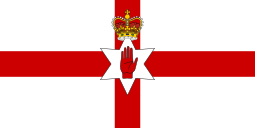
.svg.png)
%3B_Flag_of_Serbia_and_Montenegro_(2003%E2%80%932006).svg.png)
Asia
.svg.png)



.svg.png)


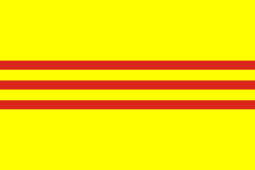




Africa
.svg.png)


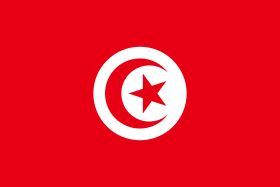
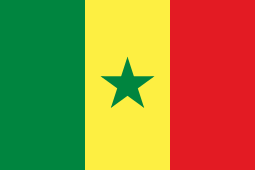
.svg.png)
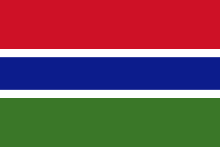
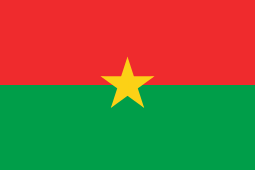

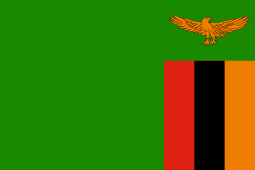
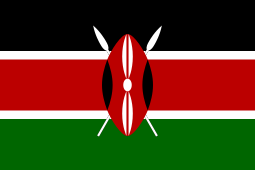
Oceania
.svg.png)

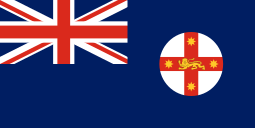
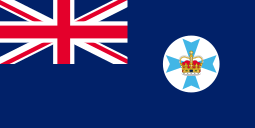

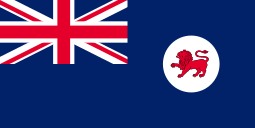
.svg.png)
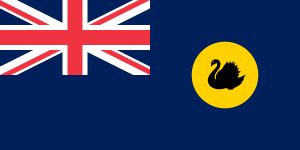
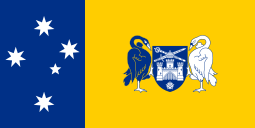
Note
- Presidents in Singapore are not allowed to belong to any party.
- The predecessors of the ÖVP are the Christian Social Party ruled from 1907 to the renaming 1933 and the Fatherland Front ruled from 1933 to the Anschluss 1938.
- Formerly its predecessors Italian Socialist Party (before 1924), PCI, PDS and DS.
- Formerly its predecessors People's Labor Party (with SHP), People's Democracy Party, Democratic People's Party, Thousand Hope Candidates and Labour, Democracy and Freedom Bloc.
See also
Notes
- Prior to 1942, the Progressive Conservative Party of Ontario was formally known as the Liberal-Conservative Association of Ontario.
References
- Ostroverkhov, A.A. (2017). "In Searching for Theory of One-Party Dominance: World Experience of Studying Dominant-Party Systems (II)". The Journal of Political Theory, Political Philosophy and Sociology of Politics Politeia. 87 (4): 133–149 (p. 136). doi:10.30570/2078-5089-2017-87-4-133-149.
- Ostroverkhov, A.A. (2017). "In Searching for Theory of One-Party Dominance: World Experience of Studying Dominant-Party Systems (I)". The Journal of Political Theory, Political Philosophy and Sociology of Politics Politeia. 86 (3): 136–153 (p. 148). doi:10.30570/2078-5089-2017-86-3-136-153.
- Ostroverkhov, A.A. (2017). "In Searching for Theory of One-Party Dominance: World Experience of Studying Dominant-Party Systems (II)". The Journal of Political Theory, Political Philosophy and Sociology of Politics Politeia. 87 (4): 133–149 (p. 137). doi:10.30570/2078-5089-2017-87-4-133-149.
- Orlović, Slaviša (2015). "The Influence of Electoral System on Party Fragmentation in Serbian Parliament". Serbian Political Thought. 7 (11): 91–106. doi:10.22182/spt.1112015.5.
- Atlagić, Siniša; Vučićević, Dušan (2019). Thirty Years of Political Campaigning in Central and Eastern Europe. Palgrave Macmillan, Cham. p. 20. doi:10.1007/978-3-030-27693-5_21. ISBN 978-3-030-27693-5.
- Suttner, R. (2006), "Party dominance 'theory': Of what value?", Politikon 33 (3), pp. 277-297
- Mehler, Andreas; Melber, Henning; Van Walraven, Klaas (2009). Africa Yearbook: Politics, Economy and Society South of the Sahara in 2008. Leiden: Brill. p. 411. ISBN 978-90-04-17811-3.
- "Archived copy". Archived from the original on 2012-04-01. Retrieved 2012-04-01.CS1 maint: archived copy as title (link) (in English)
- Doorenspleet, Renske; Nijzink, Lia (2014). Party Systems and Democracy in Africa. Basingstoke: Palgrave Macmillan. p. 174. ISBN 978-1-137-01170-1.
- "Botswana's ruling Democratic Party wins general elections". BBC News. BBC. 26 October 2014. Retrieved 22 October 2015.
- O'Gorman, Melanie (26 April 2012). "Why the CCM won't lose: the roots of single-party dominance in Tanzania". Journal of Contemporary African Studies. 30 (2): 313–333. CiteSeerX 10.1.1.410.9369. doi:10.1080/02589001.2012.669566.
- https://www.un.org/en/ga/search/view_doc.asp?symbol=A/RES/34/37&Lang=E&Area=RESOLUTION Archived 2015-09-04 at the Wayback Machine
- "State of Kansas Governors". TheUS50.com. Retrieved August 26, 2014.
- "Archived copy". Archived from the original on 2011-03-09. Retrieved 2011-03-06.CS1 maint: archived copy as title (link)
- 2010 Human Rights Report: Samoa, U.S. Department of State, Bureau of Democracy, Human Rights, and Labor, April 8, 2011
- "Singapore Elections Department - Parliamentary Election Results". Archived from the original on 2015-09-10. Retrieved 9 September 2015.
- "TURKEY - AKP ushering in 'dominant-party system', says expert". hurriyetdailynews.com. Retrieved 30 May 2015.
- "Turkey Under the AKP: The Era of Dominant-Party Politics". journalofdemocracy.org. 2012-01-19. Retrieved 30 May 2015.
- "Archived copy". Archived from the original on 2014-07-14. Retrieved 2014-06-04.CS1 maint: archived copy as title (link)
- Dresden, Cornelius Pollmer (2014-08-31). "CDU sucht nach einem neuen Partner". Sueddeutsche.de.
- Grétar Thor Eythórsson, Detlef Jahn (2009), "Das politische System Islands", Die Politischen Systeme Westeuropas (in German) (4., aktualisierte und überarbeitete ed.), Wiesbaden: VS Verlag für Sozialwissenschaften, p. 200, ISBN 978-3-531-16464-9
- "Labour are on course to retain their dominance in Wales, according to our latest poll".
- "It's no fluke poll - Labour is heading for a landslide in Wales".
- Jones, Richard Wyn (2016-05-06). "How Welsh Labour became the UK's most invincible electoral machine | Richard Wyn Jones". The Guardian.
- "The Guardian view on the election in Scotland: A pivotal poll for the SNP | Editorial". The Guardian. 2017-05-19.
- Canada's 'natural governing party'. CBC News in Depth, 4 December 2006. Retrieved 2012-08-10.
- Steve, Paikin (4 August 2016). "How the Big Blue Machine dominated Ontario politics for more than four decades". TVO. Ontario Educational Communications Authority. Retrieved 4 January 2020.
- Malloy, Jonathan (2 February 2018). "How the 'Big Blue Machine' broke down". The Globe and Mail. The Woodbridge Company. Retrieved 4 January 2020.
- "Bundestagswahlen - Baden-Württemberg".
- "Wahlen zum Europäischen Parlament in Baden-Württemberg".
- "Landtag Bayern 1869-1918".
- "Landtagswahlen im Saarland seit 1945".
- "Bundestagswahlen - Saarland".
- "Wahlen zum Europäischen Parlament im Saarland".
- Bihari, Mihály (2013). "A magyarországi domináns pártrendszer". Politológia: a politika és a modern állam: pártok és ideológiák (in Hungarian). Budapest: Nemzedékek Tudása Tankönyvkiadó. pp. 291–295. ISBN 9789631976281.
- Part 2: Communist take-over, 1946-1949. The Institute for the History of the 1956 Revolution.
- https://www.utoronto.ca/ai/learningtolose/participants.html%5B%5D
- "Subscribe to read".
- Cairney, Paul; McGarvey, Neil (2013). Scottish Politics. Houndmills: Palgrave Macmillan Limited. p. 58. ISBN 978-0-230-39046-1.
- Garnett, Mark; Lynch, Philip (2007). Exploring British Politics. London: Pearson Education. p. 322. ISBN 978-0-582-89431-0.
- Johari, J. C. (1997). Indian Political System: a Critical Study of the Constitutional Structure and the Emerging Trends of Indian Politics. New Delhi: Anmol Publications. p. 250. ISBN 978-81-7488-162-5.